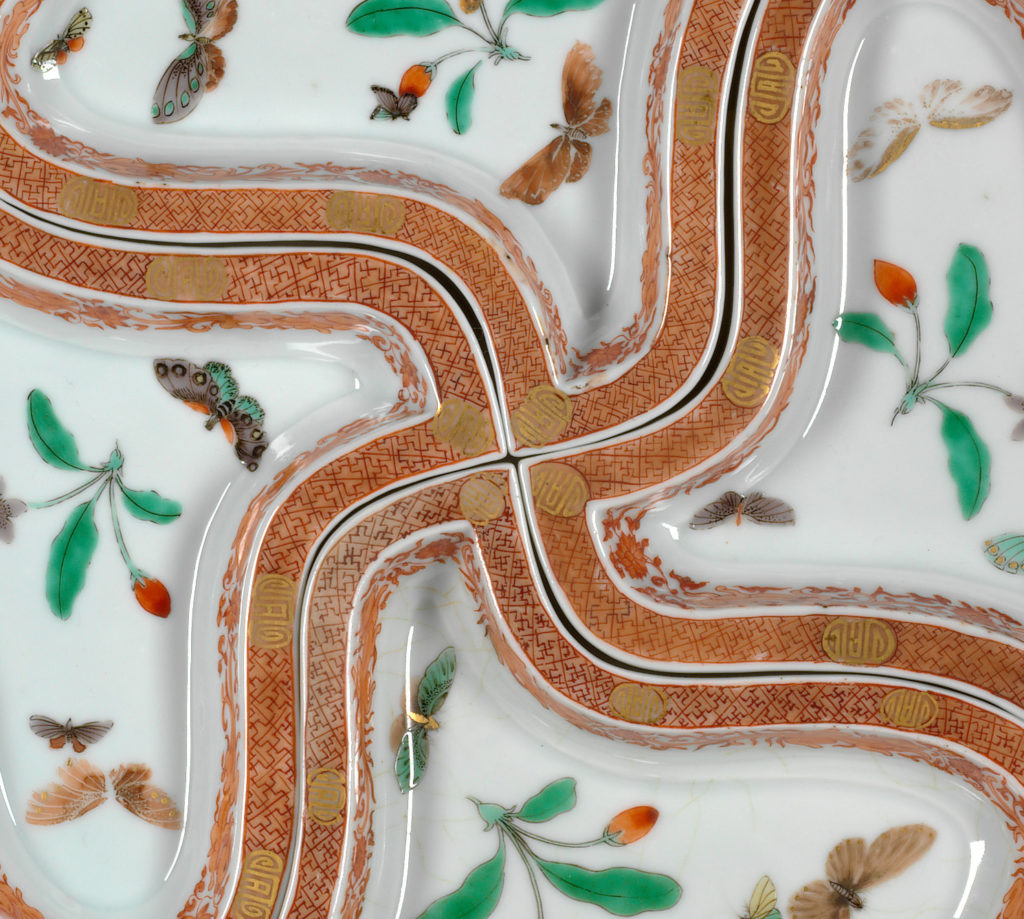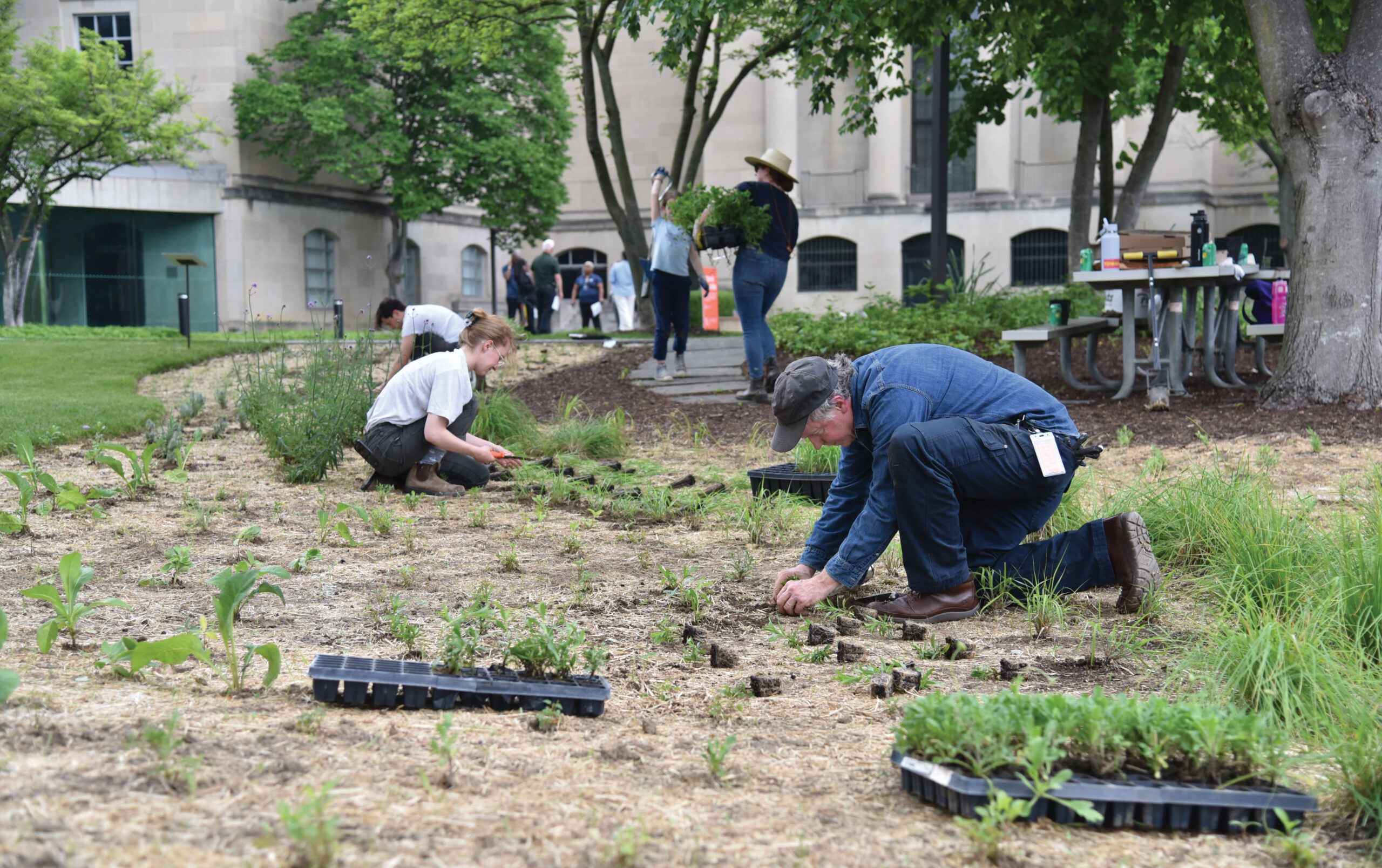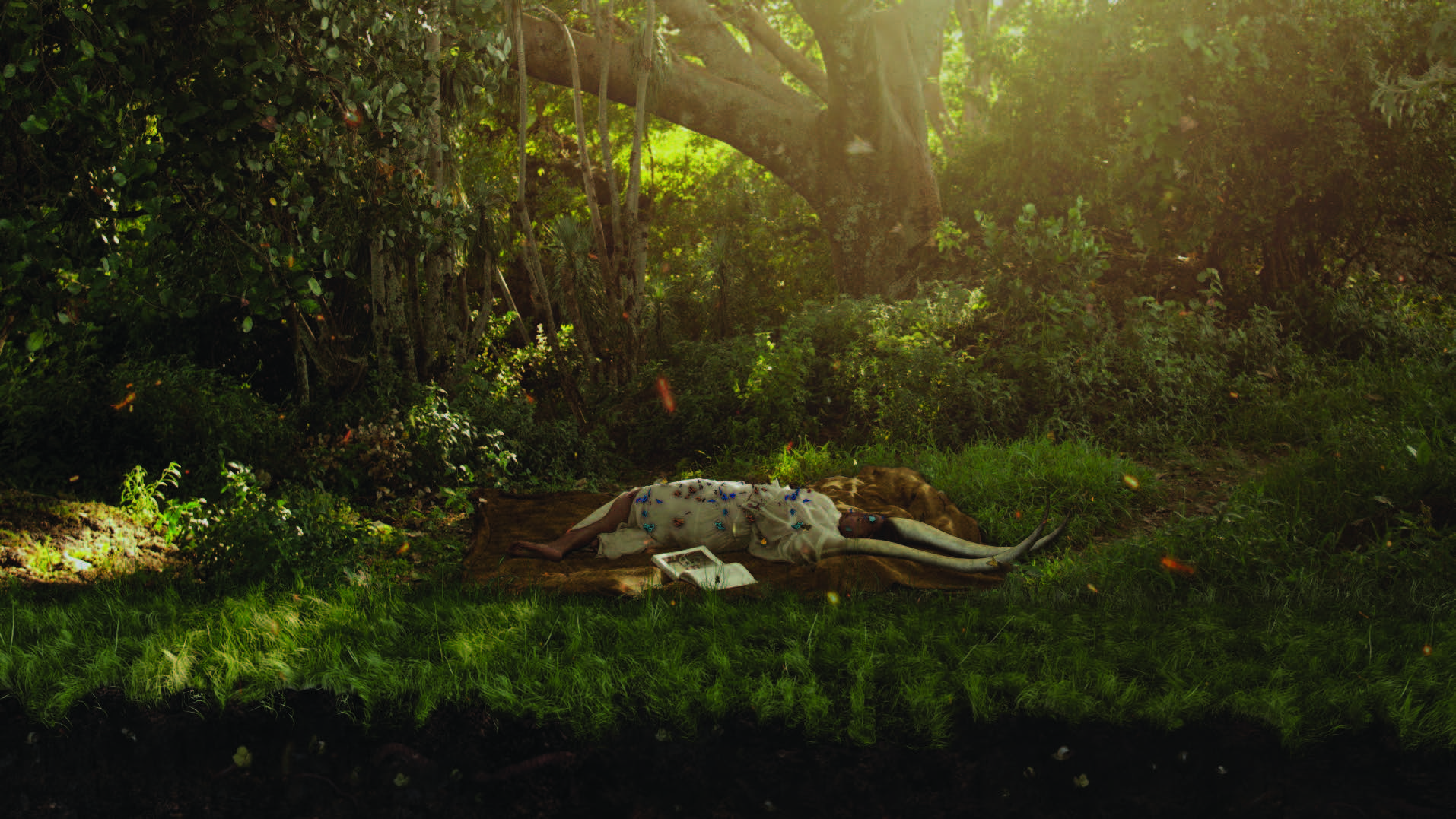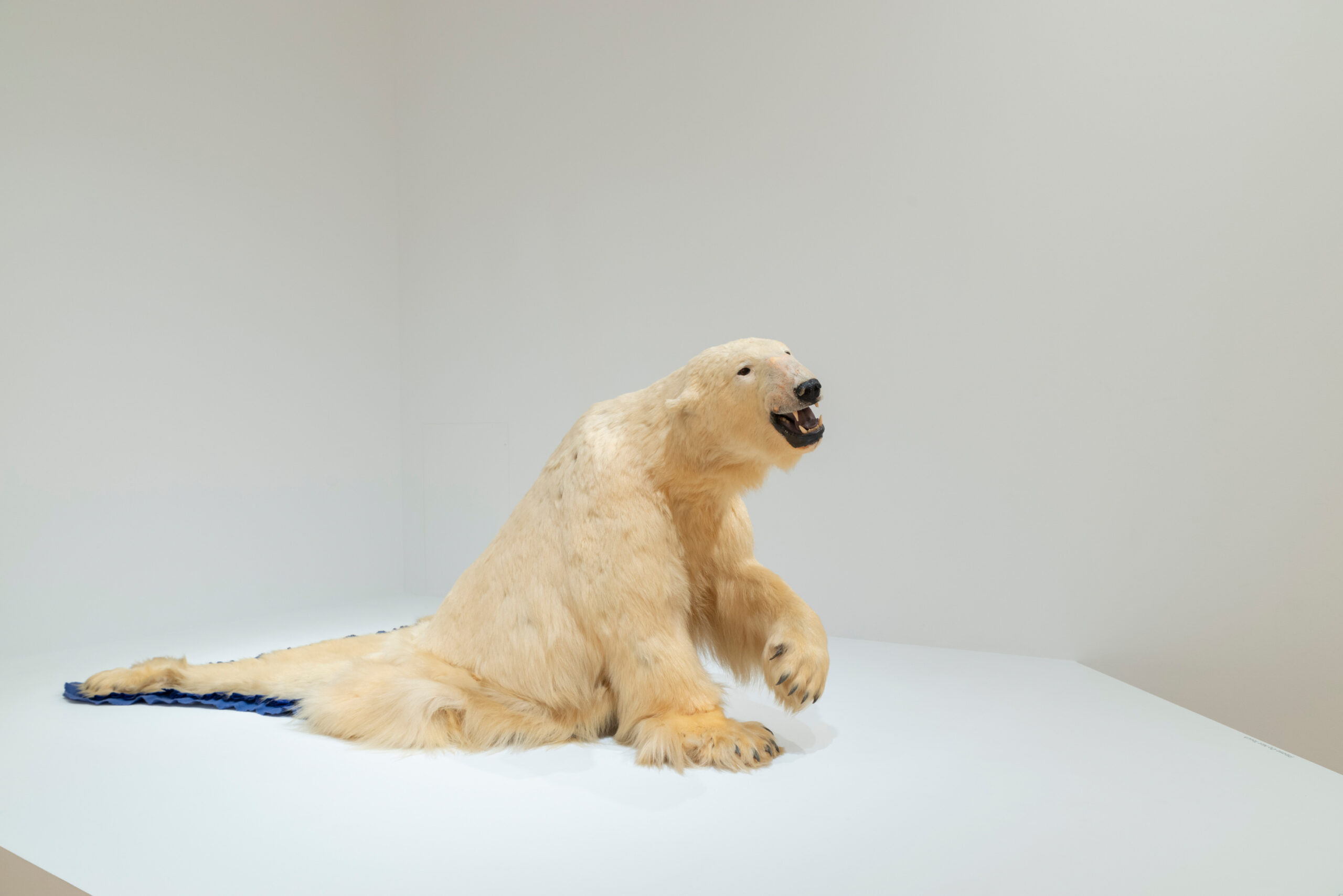
One afternoon, a young man stopped at an antique shop north of Baltimore City, hoping to find a present for his new wife.
He found the perfect gift: a puzzle-like plate with separate parts that fit together in just one way. After more than 30 years, the couple decided to offer the plate to the Baltimore Museum of Art and delivered a cardboard box with twelve small, carefully wrapped packages to the Museum.
An unusually high level of skill was required to create this segmented plate’s complex shape; delicate porcelain body; beautifully bright enamel decoration of insects, flowers, and fruit; and intricately detailed border. The shape of the dish may be based on a rose, changchun hua (eternal spring flower). Butterflies symbolize blessings and longevity. The wan (or swastika, India’s ancient symbol) character represents 10,000, and shou means long life. The wan often appears with shou to increase its prosperous meaning, and together they amplify the wish for longevity conveyed by the shape and decoration of this piece.

This dish was intended for an important person in China, possibly even someone in the Imperial household. Several plates featuring similarly fine porcelain, naturalistic decoration, and brocade-like borders with seal script characters expressing the wish for wanshou wu jiang (longevity without an end) have been associated with the banquet celebrating the Kangxi Emperor’s 60th birthday in 1713.
Just as this plate embodies an auspicious message, meals for Qing dynasty (1644–1911) emperors represented the philosophy that harmony is precious. Food was intended to nourish the body and prolong life. At the Imperial household, food was acquired by purchase, as tribute, and from court-sponsored factories. A complex system supported food preparation and relied on an extensive supply of local specialties from across the country. From Shenyang province, for example, the yearly tribute included 1,000 deer, 20,000 deer tails, 2,000 deer tongues, plus bear, wild boar, pheasant, and tiger bones. A segmented plate may have held servings of steamed chicken and deer’s tail, roast duck with barbecued pork and lotus root, or duck with fruits.

In 1661, Emperor Shunzhi of the Qing dynasty died from smallpox. Shunzhi’s third son, the eight-year-old Xuanye, was named his successor. The boy was chosen in part because he had survived smallpox and was thus immune to the contagious disease. The new reign period was named Kangxi (peaceful harmony). At age 15, the Kangxi Emperor assumed full control of governing, and his reign continued peacefully and prosperously until his death in 1722.

The largest and most lavish Qing banquets were the qingsou yan (Thousand Elders Banquets). The first of these banquets was held on April 12, 1713, to honor the 52nd year of Kangxi’s reign and his 60th birthday. More than 1,000 men over age 65 attended the celebratory banquet.
The segmented plate—on view in the reinstallation of BMA’s Asian Art collection—closely resembles the birthday plates for this important celebration, which were made not only to be used but also given as gifts to especially important guests. So in the same spirit, the donors presented a treasured gift to the BMA.
NOTE: Mr. Lu Weitao, a ceramics expert at the National Museum of China, provided background on his museum’s segmented plate: “A segmented plate set usually has three parts: a cover, a segmented plate, and a tray holder to support the plates. The cover and holder would have been made of wood, lacquer, or metal. The Manchu court used segmented plates to contain four or five kinds of food, mostly meats… the Kangxi Emperor kept a sharp eye on details—including the types and designs of the ceramics he used.”




